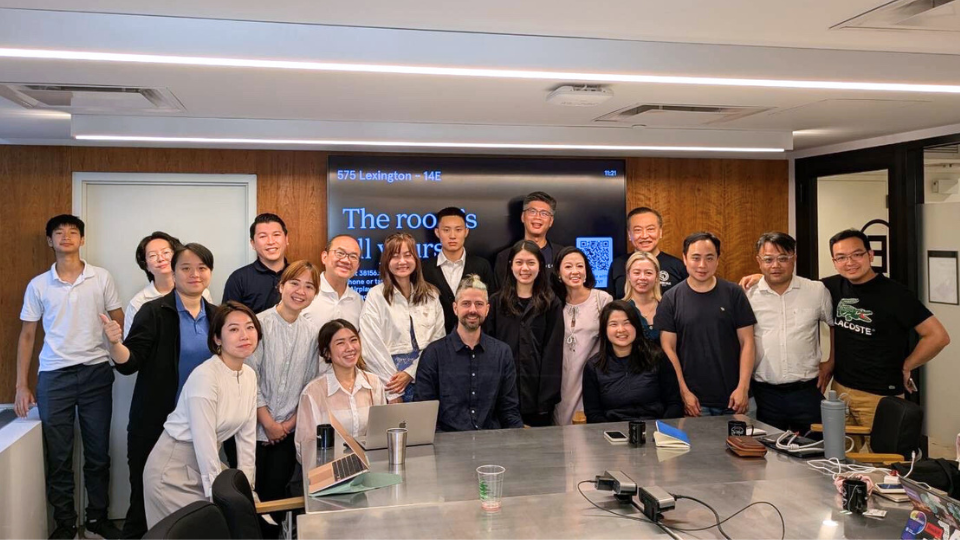David P., Partner at Pioneer Fund: What Y Combinator and U.S. VCs Taught Me About Pitching
- L L
- 9月2日
- 讀畢需時 3 分鐘
Startups are always juggling a million things, such as product, team, operations, growth. And on top of that, there’s a flood of advice from countless accelerator programs and mentorships.
But at the end of the day, what really matters is whether your pitch can get an investor to put down their phone, remember you, and want to continue the conversation. Especially when you’re entering a foreign market, that can feel like an impossible mission.
This year, after landing in New York, we organized a hands-on session led by U.S. VC expert Dr. David P.. This wasn’t just another "how to make a pitch deck" workshop, it was about shifting the mindset of Taiwanese startups when it comes to fundraising and pitching in a global context.
Dr. David P. is a Y Combinator (YC) alum who founded a legal tech company in the U.S., focused on mass litigation. He is also a General Partner at Pioneer Fund, a venture capital firm managing $150–200M and investing in around 300 startups annually.

Pitching Isn’t About Explaining, It’s About Inviting
Pitches are short. And investors see a lot of them.
David pointed out a common pitfall for many Taiwanese founders:Pitching is not about explaining what you do, it's about inviting someone to learn more.
In other words, your goal isn’t to cram every piece of information into a few minutes.Your goal is to make the listener want a second meeting.
Too often, founders rush to explain everything—product features, tech innovation, competitive edge, but what really matters is your opening hook: a powerful stat, or a relatable, urgent problem.
What Does a 60-Second YC Pitch Look Like?
As a YC alum, David shared a simple structure based on his own experience:
Problem – What’s missing in the world? What pain point are you solving?
Solution – What’s your answer to that problem?
Market Size – Is this a big enough opportunity?
Team – Why are you the right people to build this?
Traction – What proof do you have that it’s working?
The key takeaway: Numbers speak louder than adjectives.Saying “200,000 users” is stronger than saying “fast-growing.”Saying “95% of pet owners board their pets at least once a year” is more compelling than “huge potential in Western markets.”
The Most Common Pitch Mistakes We See
A pitch is not a script to memorize, it’s a story you can tell naturally and confidently, even half-asleep. Every part of the structure matters.
But here’s where many teams go wrong:
Strong hook, weak team intro
You grab attention with a great problem, but forget to build credibility by introducing your team. This hurts trust.
Solid traction, unclear market size
This is a frequent issue. Remember—investors care about how big the opportunity is, not just early wins.
Great business model, no emotional connection
A pitch is more than cold hard facts. Humans respond to emotion and personality. The story behind the product—and the founder—is what sticks.
Fundraising Is a Marathon, Not a Sprint
David wrapped with a powerful reminder:
Startups are marathons.
YC’s program lasts 3 months. Demo Day is just one day. But building a company takes 5 to 15 years.
You’ll hear a lot of "No"s.
Each rejection is just a data point. Don’t change direction immediately—but learn, adapt, and try again.
Your credibility as a founder comes from your ability to execute.
Investors want to see that the journey has already started, and that they’re being invited to come along.
So don’t treat one pitch, one event, or one fundraising round as “the finish line.”It’s just another mile marker on the road. That’s also the core mission behind out accelerator program—to provide long-term support for startups beyond the first pitch.




留言